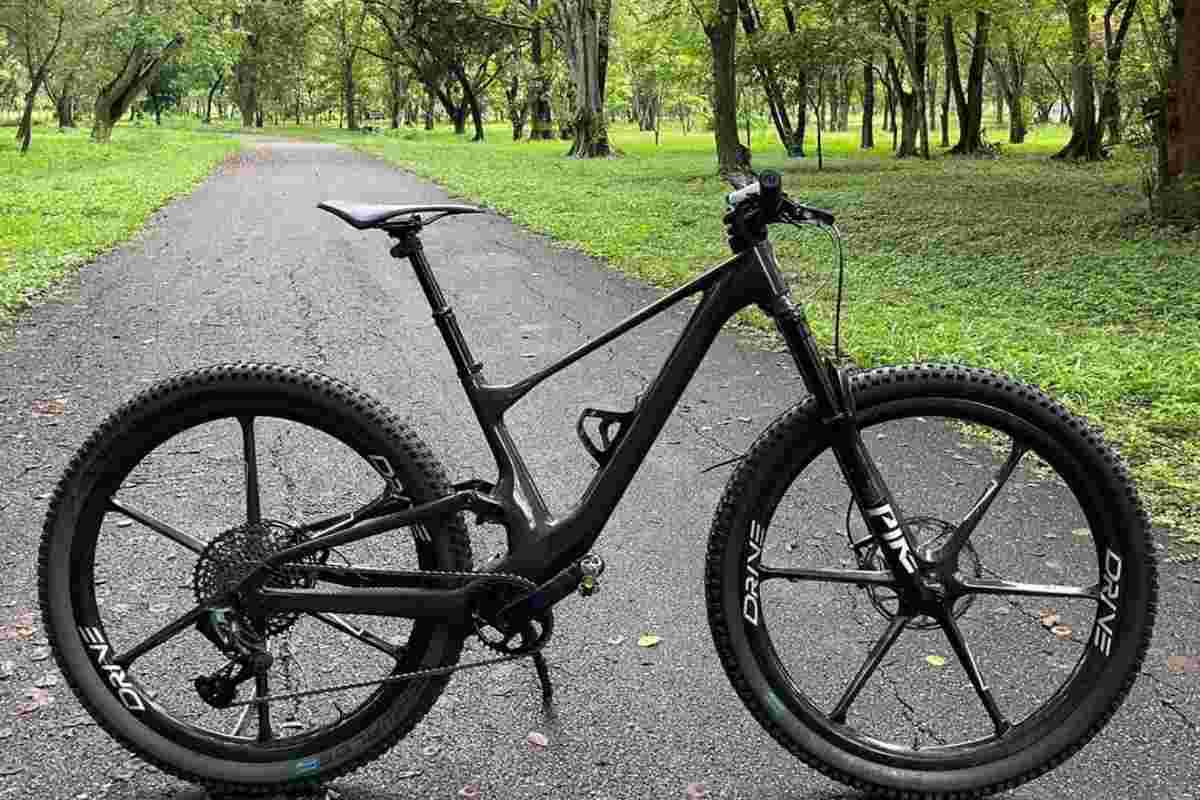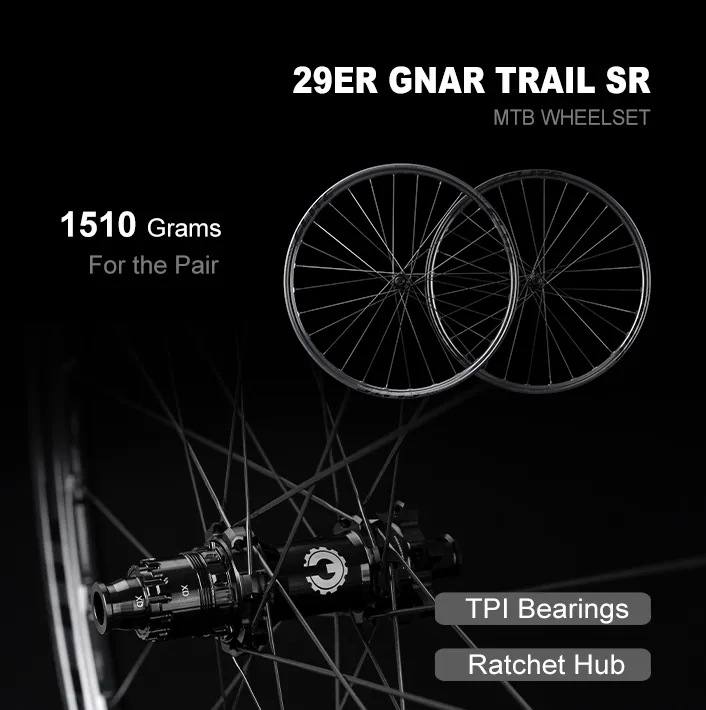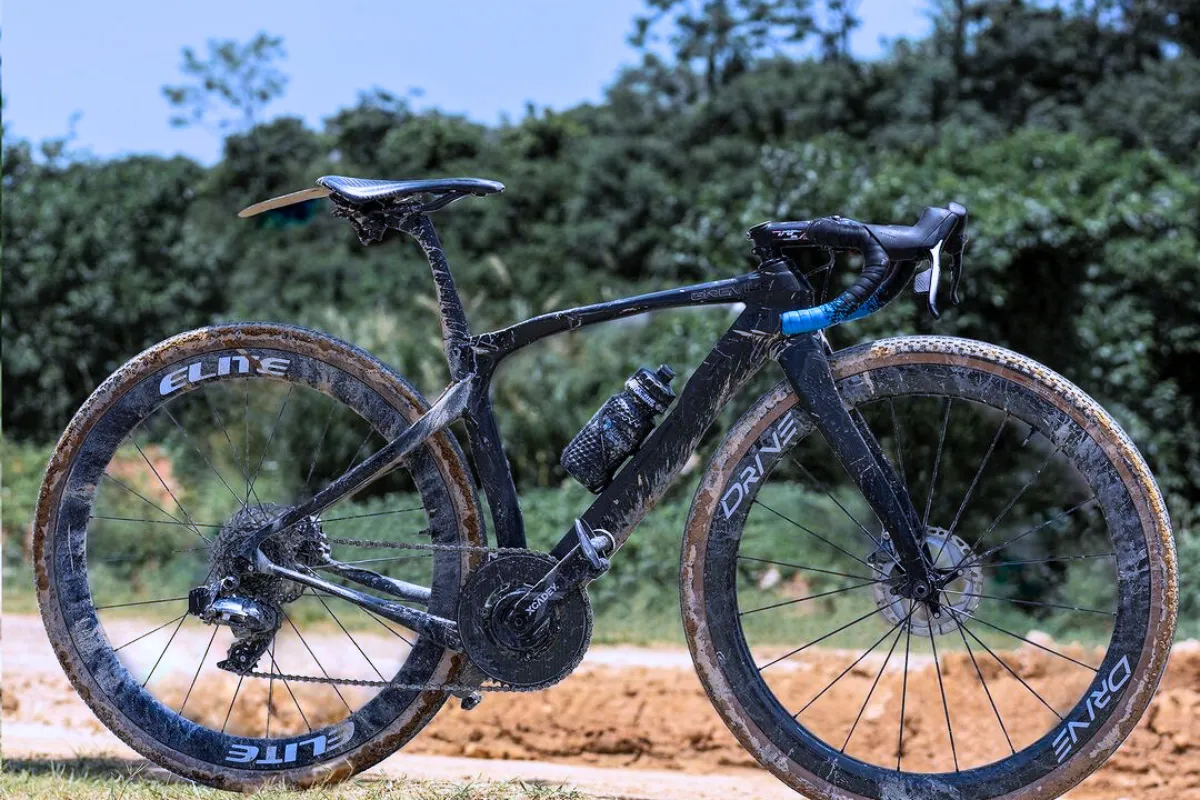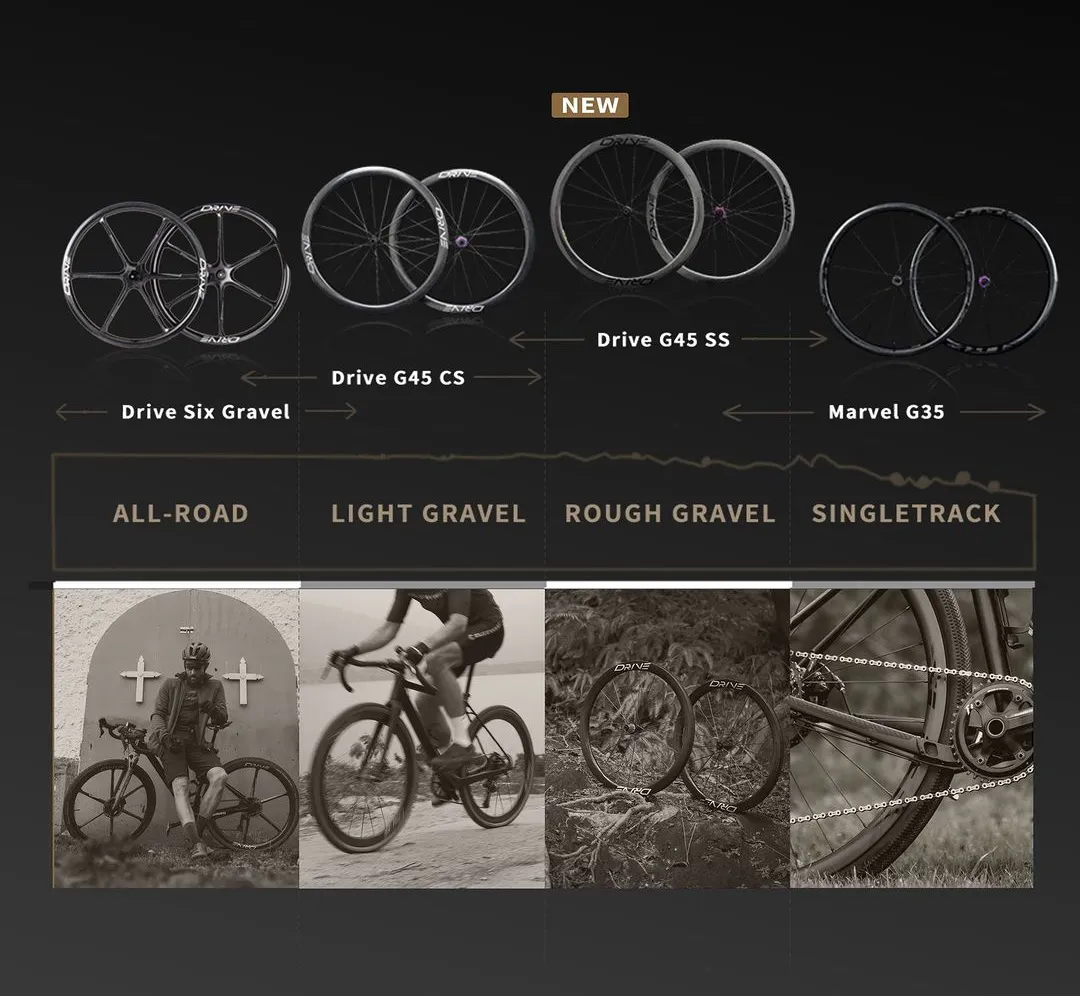A new wheelsest is in most cases the most significant upgrade you can make to the overall performance of a bike, whether you ride a mountain bike, a gravel bike or a road bike… But with so many options, how do you choose the right wheel size? This guide will get you started.
Mountain Bike (MTB) Wheel Sizes
The right wheel size for you depends on your riding style, terrain, and personal preference. Mountain bike wheel sizes have evolved significantly over the years to cater to different riding styles, terrain types, and rider preferences. Here’s a quick guide to help you decide between the most common wheel sizes:

26” Wheels
This is the original standard for mountain bikes, widely used in the early days of MTB. Smaller diameter wheels are lighter and more maneuverable, making them ideal for technical trails and quick changes in direction. Now, 26” wheels are quite rare, but we will touch on it anyways.
Pros:
Lightweight and nimble.
Quick acceleration.
Durable due to shorter spokes.
Cons:
Less efficient rollover on rough terrain.
Limited availability of new models and components.
27.5” Wheels (650B)
These started to become popular in the early 2010s, offering a middle ground between 26″ and the current most popular 29″ wheels of today. These wheels maintain a lot of the agility of 26″ wheels, but with improved rollover capabilities.
Pros:
Better rollover than 26″ wheels, handling roots and rocks more smoothly.
More agile and quicker to accelerate than 29″ wheels.
Suitable for a wide range of riding styles, from cross-country to enduro.
Cons:
Can be a compromise, not excelling as much in specific conditions compared to 26″ or 29″ wheels. Marginally heavier than 26″ wheels.
29” or 29er (700C)
This is the current standard wheel size for cross-country and many trail bikes due to its efficiency and ability to handle rough terrain. Larger wheels provide better traction and roll over obstacles more easily.
Pros:
Superior rollover capability, making them ideal for rough and technical terrain.
Better momentum and efficiency on long rides and climbs.
Improved traction due to a larger contact patch.
Cons:
Heavier and slower to accelerate compared to smaller wheels.
Less maneuverable in tight and technical sections.
Can be challenging for shorter riders to find a good fit.
Plus-Size Wheels (27.5+ and 29+)
Plus-size wheels are a relatively new addition, featuring wider rims and tires (2.8 to 3.0 inches). They provide more traction and comfort, particularly on loose or technical terrain.
Pros:
Increased traction and stability due to wider tires.
More cushion and comfort, absorbing trail chatter and impacts.
Suitable for various riding styles, including trail, all-mountain, and bikepacking.
Cons:
Heavier due to larger tires and rims.
Increased rolling resistance.
Limited tire clearance on some frames and forks.
Recommended Wheels

Elitewheel’s 29er Gnar Trail: This carbon wheelset is designed for the trail, AM (All Mountain), and XC (Cross Country) disciplines. It features a modern rim shape with an asymmetrical profile. The inner width is 30mm, while the outer width is 37. It comes with two different hub choices,. The 29er Gnar Trail SR (star ratchet) features the Elitewheels Pro hubs, which comes with a 36T ratchet or an optional 60T option. The alternative 29er Gnar Trail PR (pawl ratchet) version has 320 points of engagement and can be used for eMTB riding.
Elitewheel’s 27.5er Pro35: This wheelset was designed for and tested on the Downhill World Cup Circuit. It features a 28mm internal width, offering additional sidewall support. It is an all-rounder which can be used in all-mountain and enduro events.
Drive Six MTB: This one of a kind 29er wheelset pushes the boundaries of what a MTB carbon wheelset is. The design was specifically chosen to offer something that performs as great as it looks. With a monocoque, full carbon wheel design with 6 carbon spokes, it is robust enough for the stresses of XC riding.
Road Bike Wheel Sizes
Road bike wheels are designed for efficiency, speed, and performance on paved surfaces. The primary wheel sizes for road bikes are 700C and 650C, each with specific attributes that cater to different riding needs and rider preferences.
700C Wheels
This is by far the most commonly used wheel size for road bikes. It offers a balance of speed, efficiency, and comfort, making it ideal for most road riding conditions.
Pros:
Efficiency and Speed: Larger diameter wheels maintain momentum and offer a smoother ride on paved surfaces.
Versatility: Suitable for a wide range of road bikes, including racing, touring, and endurance bikes.
Availability: Wide selection of tires, rims, and wheelsets, providing numerous options for different riding styles and conditions.
Cons:
Fit for Smaller Riders: This size can be less ideal for smaller riders due to the larger frame sizes required to accommodate them.
Weight: Heavier than smaller wheel sizes, which can slightly impact acceleration.
650c Wheels
These wheels are less common and are typically found on smaller frames and some time-trial (TT) or triathlon bikes. Approximately 571mm. Smaller diameter wheels can improve aerodynamics.
Pros:
Fit for Smaller Riders: Better suited for smaller frames, ensuring proper bike fit and handling.
Aerodynamics: Often used in TT and triathlon bikes to lower the front end and improve aerodynamics.
Acceleration: Lighter and quicker to accelerate due to smaller size and reduced rotational mass.
Cons:
Limited Availability: Fewer options for tires and wheelsets as compared to 700C options.
Less Efficient: May not roll as smoothly over rough surfaces and can be less efficient on long rides.
Recommended Wheels
Elitewheels’ entry-level Marvel carbon wheelsets start at only $599 for the pair. They come with ceramic bearings and pillar spokes, with an optional upgrade to Sapim CX Ray Spokes. They come in both disc and rim brake options.
Drive road wheelsets, starting at $1169 and weighing as little as 1260g for the pair, are 300-400 grams lighter than our entry-level wheelsets. They feature our own in-house high grade carbon fiber, replaceable carbon spokes, and ceramic bearings. They are available in both disc and rim brake options and are currently raced by six UCI Continental pro cycling teams.
The Velo Six is a full carbon, monocoque wheelset with, you guessed it, six spokes. It features a star ratchet hub. The wheelset is exceptionally stiff and aerodynamic, making it perfect for high speeds and sprinting on the flats.
For triathletes and time trialists, the Velo TT the aero disc wheelset features a minimalistic UD carbon weave, a lightweight freehub and enduro bearings. It’s PMI core increases its stiffness and strength while keeping the wheelset lightweight.
Gravel Bike Wheel Size
The right size gravel wheel size for you largely depends on the type of terrain you ride, your riding style, and personal preferences. Here’s a deeper look into considerations for each wheel size:
700C Wheels
700C wheels are for riders who prioritize speed and efficiency on mixed terrain, including paved roads and hard-packed gravel. Suitable for routes with a mix of smoother trails, dirt roads, and pavement. They are generally used with narrower tires (30-45mm), which are faster on smoother surfaces but still offer good grip and comfort on moderate gravel.
650B Wheels
Those who mostly ride on more technical terrain and prioritize traction, comfort, and stability may want to choose 650B wheels. 650B wheels allow for the rider to use wider tires as frames often do not allow for wide tires on 700C wheels due to a lack of space because of the fork and and the seat tube. These wheels are ideal for challenging gravel roads, singletrack, and off-road trails where larger tires offer better control and shock absorption. Paired with wider tires (47mm+), they allow for lower pressures to be used, increasing grip, and improving ride quality on rough surfaces.
Recommended Wheels
The entry-level Marvel G35 gravel wheelset (700C) is perfect for those getting started. It features the premium steel spokes, Sapim CX Rays. It also features ceramic bearings for lower rolling resistance.
The Drive G45 CS (700C) and Drive G45 SS (700C) feature carbon and steel spokes respectively. Our replaceable carbon spokes help to improve lateral stiffness while reducing weight. Both wheelsets are excellent for those who are into racing or want to have the best when it comes to performance.
The Drive Six (700C) is a unique gravel wheelset that uses a full carbon monocoque design, making it laterally stiffer and more aerodynamic. It has a striking appearance that is likely to turn heads.
Fat Bike Wheel Sizes
Fat bikes are designed for riding on soft, unstable terrain like snow, sand, and mud. The wheels and tires are much wider than those on traditional mountain bikes, providing increased flotation and stability.
26 Inches (559mm)
Typically 3.8 to 5 inches. This is the standard wheel size for fat bikes, offering excellent flotation and traction.
Pros:
Exceptional flotation on soft surfaces like snow and sand.
Enhanced stability and control on loose terrain.
Widely available tires and components.
Cons:
Increased rolling resistance on hard surfaces.
27.5 Inches (650B)
Approximately 584mm. Typically Compatible with the tire width of 3.8 to 4.5 inches. A newer option for fat bikes, providing a balance between flotation and agility.
Pros:
Slightly better rollover capability compared to 26-inch wheels.
Improved traction and stability.
Cons:
Limited availability of tires and components compared to 26-inch wheels.
Folding Bikes
Folding bikes are designed for compactness and portability and are often used for commuting and urban riding where storage space is limited. The wheel sizes for folding bikes vary depending on the model and design, but the most common sizes are 16, 20, and 24 inches.
16-Inch
These are ideal for short commutes, frequent folding, and carrying on public transportation.
20-Inch
Slightly larger, 20” wheels offer a balance between ride quality and compactness, making them suitable for medium-length commutes and urban riding.
24-Inch
The largest option offers a more conventional riding experience. They are suitable for longer commutes and rides where performance and comfort are priorities.
BMX Bike Wheel Sizes
BMX (Bicycle Motocross) bikes are designed for off-road racing and stunt riding, with wheel sizes that cater to different riding disciplines within BMX.
20-Inch Wheels
This is the standard size for BMX bikes. They offer a balance between agility and stability.
Pros:
Provides quick acceleration and maneuverability, ideal for jumps and tricks.
Strong and durable, designed to withstand the rigors of BMX riding.
Wide range of tire options available for different surfaces and riding styles.
Cons:
Can feel less stable at high speeds compared to larger wheels.
Limited comfort on rough terrain due to the smaller wheel size.
24-Inch Wheels
Larger wheels that offer a smoother ride and more stability than 20-inch wheels.
Pros:
Improved stability and comfort, especially for taller riders or those seeking a more stable ride.
Easier to maintain speed and momentum over rough terrain.
Suitable for older riders or those transitioning from mountain biking.
Cons:
Less agile and maneuverable than 20-inch wheels, making them less suitable for certain tricks and jumps.
Limited availability of frames and components compared to 20-inch BMX bikes.
Conclusion
Choosing the right wheel size is crucial for optimizing your riding experience. Whether you’re riding a mountain bike, road bike, gravel bike, fat bike, folding bike, BMX bike, each wheel size offers distinct advantages and considerations. Understanding the characteristics and benefits of different wheel sizes can help you make an informed decision that enhances your performance and enjoyment on the road or the trail.












